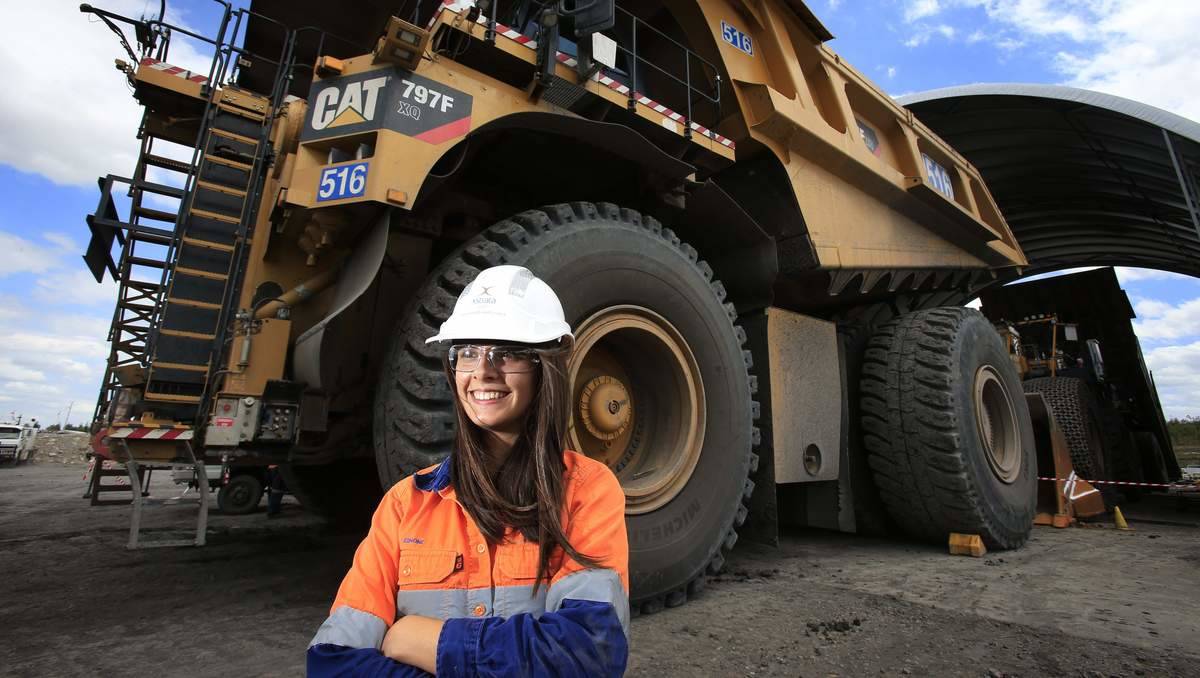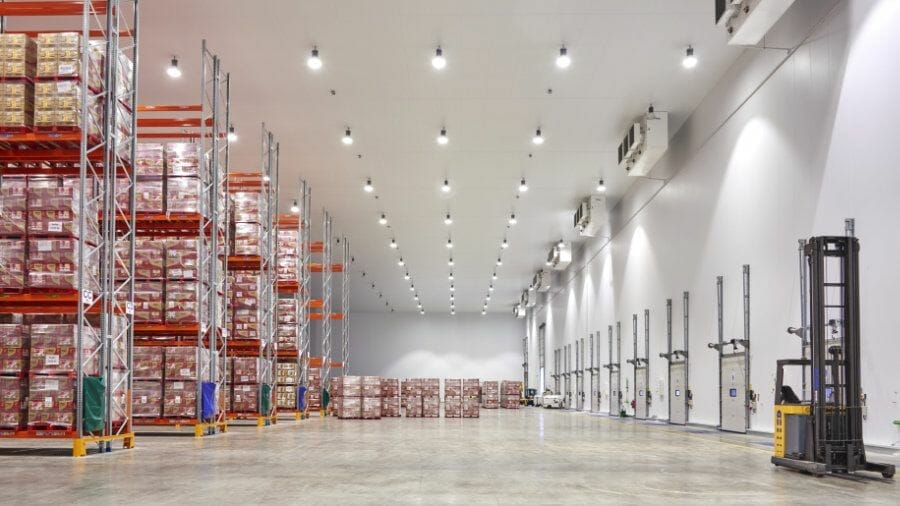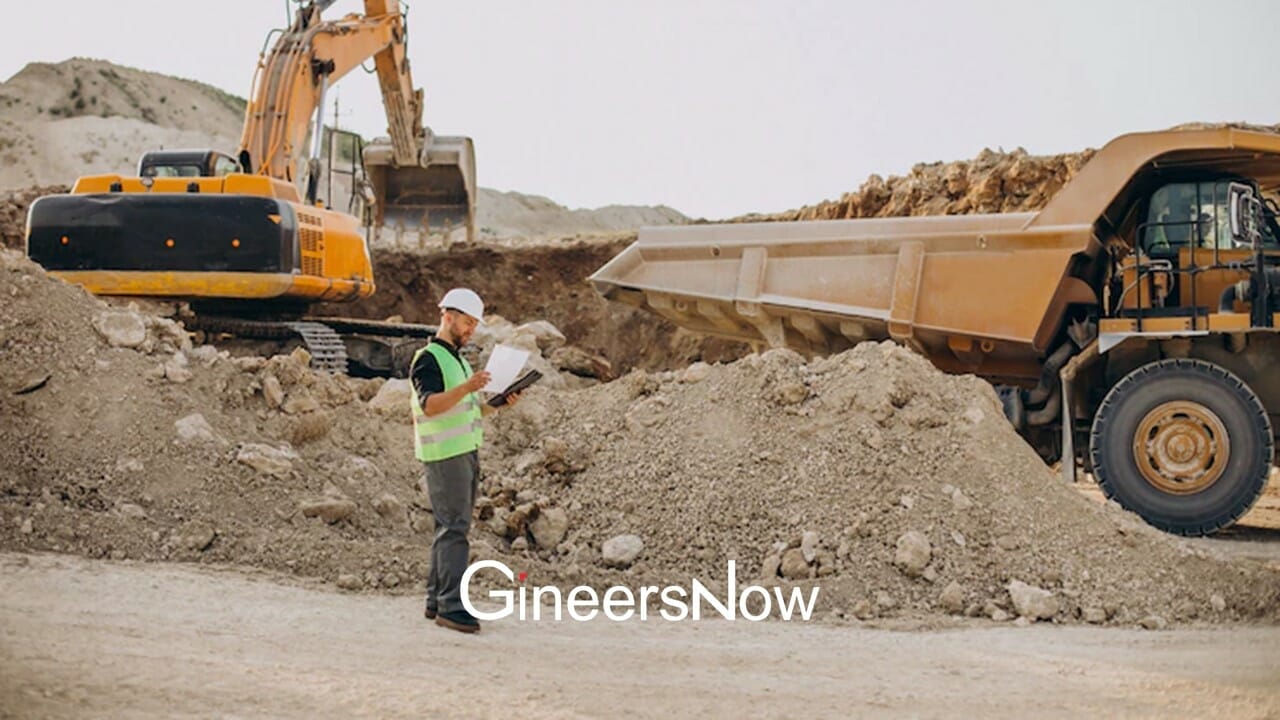A Millenial Engineer’s Guide To The Role of Mining In Society
Note from the editor:
Mining is not exactly a favorable topic in the public eye. It’s surrounded with controversies and several issues that affect the livelihoods of different people. Some would argue that mining has a negative impact on our environment and different organizations and agencies have focused on closing down several mining operations. Others would point out that contrary to popular belief, mining is essential in our daily lives. The minerals and metals mined out of the ground have played crucial roles in the development of our society – from manufacturing to the advancement of our technologies.
The importance of educating the youth on the role of mining is crucial, so in an attempt to do so, I’ve approached Engr. Prince Joseph Javier to write about the said topic. He’s currently one of the junior mining engineers at Silangan Mindanao Mining Co. Inc. in the Philippines. With a 1.171 General Weighted Average (GWA), he graduated Summa Cum Laude at the University of the Philippines Diliman and topped the Mining Engineer Licensure Examination on September 2014. Together with his work colleague, Engr. Mae Lean I. Langcay, they wrote this piece to educate people on responsible mining.

The Role of Mining in Society
By Engr. Prince Joseph Javier and Engr. Mae Lean I. Langcay
Mining as a process is arguably one of two key foundations of modern society — the other one being agriculture. The same way we get crops and meat from agriculture, we get raw materials needed to create a whole range of products that we use from mining. Even during the stone age, people have been collecting stones and sharpening them to make various tools and weapons. Today, our demand for stones, metals, and other mined materials is higher than before due to the technologies we use — cars, computers, appliances, cell phones, houses, you name it. Virtually everything we use today need raw materials from mining — either as their components or as components of the machines that are used to make them.
Beyond this, mining can contribute to social development and development of science and technology, while mitigating its environmental impacts. Many modern mining operations contribute to national economies, community development, and environmental enhancement. Satisfying the needs of communities, following local and national regulations, while implementing environmental programs to mitigate and even improve the environment are the hallmarks of what is called “responsible mining.” Science and technology benefits from mining as well. This is because the challenges encountered in mining operations encourage creative thinking in order to come up with innovative solutions. Mining also opens up opportunities for more detailed study of the Earth especially the crust. These solutions can spill over to other industries and aspects of our lives. Society depends on mining on plenty of things.

What is mining and how did the materials from mining end up in our smartphones? SME Mining Engineering Handbook defines mining as “the set of the processes, the occupation, and the industry concerned with the extraction of minerals from the earth.” It involves four major steps namely, exploration, development, production, and finally, closure and rehabilitation. The first step in any mining project is to conduct geologic investigations to locate the deposit. This stage, called exploration, involves surveying of rocks on the surface and drilling for rocks that are hundreds of meters below the surface, among other things. Based on the information gathered, which are called geologic data, a 3D model of the mineral deposit can be generated by a computer. The possible economic value of the mine based on all the geologic data will then be evaluated.
The next stage of mining is development which involves construction of surface infrastructure, initial clearing of mining area, and initial excavation or tunneling to reach the ore deposit. Production will commence after fully developing the mine. During the production stage, either a large hole is gradually opened up on the ground creating an open pit or the minerals will be mined from underground tunnels. The excavated ore will be transported to the processing plant on the surface near the mine. Afterwhich the ore will undergo a series of processes of mineral concentrating, melting, and refining until the final product is produced, like copper plates, or gold bars. This product will then be used by manufacturers to make various tools, electronics, and machines.

A mine can operate for decades until it runs out of economic mineral reserves. When the mine closes, it must be rehabilitated into the pre-mine environmental conditions or into sustainable income-generating projects like resorts, agroforests, or parks. Mining deals with extracting minerals from the earth. The raw materials dug up from the mine undergo a series of processes until the final products are produced. These final products are finally used to manufacture various things that we use everyday.
Mankind has been mining for materials since tens of thousands of years ago. In fact, mining and the development of human civilization and culture are so intertwined that major stages in human history are identified by various minerals or their derivatives: Stone Age, Bronze Age, Iron Age, Steel Age, and Nuclear Age. During the Stone Age, man used wood, stone, bone and ceramics for shelter, weapons and utensils. Other materials such as ceramics, clay, salt and meteoric iron were used as ornaments, decoration, jewelry, coinage, and components of cosmetics. People eventually used minerals to make various components for shelters as well as transportation equipment. Copper, discovered in Cyprus in 2700 BC, became a sought-after component of tools, weapons, and kitchen utensils. Uranium, which was first extracted from the Habsburg silver mines in Bohemia in the middle ages, was initially used to color glass and ceramics. The radioactive properties of uranium were then discovered, eventually leading to the development of the nuclear bomb and eventually nuclear power plants in the 20th century, signalling the beginning of the nuclear age.

Metallurgy, the process of separating or mixing metals, began as early as 7000 BC with copper being melted and cast into objects, followed by lead, silver, gold, and iron. Advancements in metallurgy made it possible to mix metals into their alloys forming bronze, iron and brass. During the 18th century, iron metallurgy made great strides and made Industrial Revolution possible, a period during which the economy of an underdeveloped country could be transformed into an industrial economy, stimulated by the availability of energy and metal sources. This developing technology was accompanied by a revolution in science and engineering. The machine age, a product of the industrial revolution, needed certain minerals as raw materials and as a source of energy, making industrial power a measure of nation’s political and military power, and economic wealth. Today, our modern society needs these raw materials for machineries used in various industries, electronics for computers and communication, and nuclear fission for warfare and electrical power generation. The demand for raw materials from mining is ever-increasing in order to sustain our growing needs for infrastructure, goods, and services.
Virtually all things we use today are products of mining. Copper, for example, is used to make various kinds of products like electrical wire, cookware, pipes, car parts, paint, and electrical appliances. Iron is a common component of paint, cosmetics, and fertilizers, and when mixed with carbon forms steel. Nickel when mixed with steel produces stainless steel which is used for various objects like sinks, kitchenware, and musical instruments. Gold is primarily used for jewelry but is also used for electronics and electrical appliances. Chromite is used for stainless steel production and also in the tanning process of leather. Aluminum is used for cans, kitchenware, and airplane parts, among others. Calcium carbonate, fluoride, and titanium are used for toothpaste. Lithium is an integral component of the batteries of our smartphones. Plenty of things we use have components that came from mining. We can go on for hours enumerating them all.

The raw materials that we need to manufacture various products come from several mines around the world.
Copper for example comes from mines in more than 50 countries, the largest of which is the Escondida Copper Mine. The Escondida Copper Mine in the Atacama Desert of Northern Chile, had an estimated 32 million tonnes of copper reserves in 2012. In 2013, the mine produced 1.1 million tonnes of copper, equivalent to around five percent of total global copper production in that year.
Aluminum comes from the rock called bauxite, with Australia as the biggest producer, producing almost 80 million tonnes of bauxite in 2014. This is equivalent to around 30% of the world’s total output for that year.
The largest bauxite mine in the world is the Huntly Mine in Australia, which produced 18 million tonnes of Bauxite in 2006.

In the case of the Philippines, copper, gold, and nickel are mostly mined and exported. The largest gold producers in the Philippines are Masbate Gold Project in Masbate Island, Didipio Copper Gold Project in Nueva Vizcaya, and Padcal Copper-Gold Operation in Benguet. The Toledo Copper Operation in Cebu, meanwhile, is the largest copper producer in the country. And the largest direct shipping nickel ore producer is the Rio Tuba Nickel Project in Palawan.
There are more mines for different materials around the world including mines for coal, diamond, graphite, gypsum, lithium, natural gas, platinum, salt, selenium, sulphur, talc, titanium, and uranium, to name a few.
Since mining involves intensive earth excavation and use of various chemicals for ore processing, mining, if haphazardly done, can negatively impact the environment and local communities where it operates. But such impacts can be avoided by practicing responsible mining. A responsible mine follows the law and uses best international practices for its operations, social programs, and environmental management. Responsible mines exist and they play a major role in economic improvement and community development.
Three examples of responsible mining companies in the Philippines are OceanaGold Philippines Inc. (OGPI), Rio Tuba Nickel Mining Corp. (RTNMC) and Silangan MIndanao Mining Co., Inc. (SMMCI).

OGPI, an open pit gold-copper mine in Nueva Vizcaya, focuses on improvement of local education opportunities, community health and infrastructure, cultural preservation, business and development opportunities, conservation of the environment, and local employment support through its ‘We Care” Program. “OceanaGold is now ready to construct our 18-classroom building. They also provide us with instructional materials, and other supports such as special trainings. With the support of OceanaGold, I believe that ENVHS will become a very good school. We will meet the standard given to us by the Department of Education.”, Osmundo Espejo, school principal of Eastern Nueva Vizcaya National High School. With its exemplary efforts to implement development programs for the community and environment, OGPI received a gold award for best workplace practice at the 7th Annual Global CSR Summit and Awards held in Yogyakarta, Indonesia.
RTNMC, a nickel ore mine in Palawan, implements community initiatives to modernize health centers, eradicate malnutrition and decrease infant and maternal mortality rate. The mine also regularly conducts sanitation and health awareness campaigns, and medical missions. The company allotted funds for its Indigents and Indigenous Peoples’ hospitalization program, giving 45,944 individuals free hospitalization and treatment at the company’s hospital; Other social projects include coffee farming projects that provide a stable source of income for farmer-members from eight impact barangays, financial assistance to improve school facilities, and provision of education-related materials. RTNMC restores mined-out areas as close as possible to its pre-mining condition or develop them for other uses, where the surrounding communities will benefit. Because of these initiatives, RTNMC was awarded the Presidential Mineral Industry Environmental Award for environmental excellence in 2015.
SMMCI, a pre-operating mine in Surigao del Norte, administers its community assistance program by involving the impacted communities in activities that enhance quality of life, imparting them with entrepreneurial skills, providing seed capital in small-scale livelihood projects, and creating organizational forums to inform people about the positive and negative effects of the mining project. Narcita Ajoc, a member of a People’s Organization in the province and one of the beneficiaries of the program said, “SMMCI provided us with financial literacy, bookkeeping, entrepreneurship and leadership training.” In 2015, SMMCI selected and funded 11 academic researches, sponsored 80 out-of-school youths in their Technical-Vocational training, and built eight school buildings benefiting 4000 students in the province. SMMCI also donated dormitory buildings, medical equipment and ambulance to the communities, while at the same time improving their water systems. Among the recognitions and awards SMMCI received are the Safest Mine Award (Exploration Category) and First Runner Up for Best Mining Forest (Exploration Category) for its reforestation efforts.

According to the Philippine Mines and Geosciences Bureau, as of January 2015, mining companies in the country have committed a total of around $130 million for social and community projects, which will benefit 711 barangays. And around $660 million have been committed for environmental management and rehabilitation programs. 95 companies participated in the government’s Mining Forest Program, successfully planting around 21 million trees over 20,000 hectares to date.
Responsible mining also exists in other parts of the world. Sullivan Mine, located in Northwest Canada, developed a ski hill and provided low-cost land for a golf course, which were later bought by the local government after mine closure. The previous mining area then became a year-round resort, attracting major investments. Another is a bauxite mine, Alcoa of Australia Ltd, which was listed for fifteen consecutive years on the UN Global 500 Roll of Honor for Environmental Achievement for its rehabilitation works on the Darling Plateau. Its rehabilitation works averages to 600 hectares yearly, and involves best practices for landscaping, pre-ripping, soil return, fauna habitat return, final contour ripping and seeding, recalcitrant planting, fertilizing, ongoing monitoring, and management of rehabilitated area. Finally, BHP Billiton launched in its Mozambique operations in 2014 the Leadership Enhancement and Development (LEAD) Project, pledging $8.8 million over five years to the new agricultural initiative to benefit farmers from three districts in the area. The project aims to work with more than 50 producer organizations that represent farms to increase their income and business opportunities, improve production capacity through farm-level training and provision of facilities, access to financing, BHP’s project is expected to directly benefit 6,500 households in the area. To date, around 30 farmer field schools have already been established.
Responsible mining, defined as mining that utilizes best practices in community development and environmental management and rehabilitation exists.

Some governments are now acknowledging their role in enforcing responsible mining in their countries by ratifying and implementing laws that require companies to allocate funds for social development, environmental management, and environmental rehabilitation. In the Philippines, the Philippine Mining Act of 1995 requires that companies implement social development, environmental management, and rehabilitation programs as applicable during the exploration, development, production, and closure stages. During the development stage, mines are required to allocate 10% of its total cost for environmental management programs. Mines in the production stage must allocate 1.5% of their total operating cost for social development programs as well as 3% of their mining and ore processing cost for environmental programs. Governments should be partners in making responsible mining a reality, through the laws that they pass and implement.
Mining provides jobs that improve the economies and quality of life in the nearby communities. According to the Mines and Geosciences Bureau of the Philippines, around 235,000 workers are employed in the minerals industry in the country. With a multiplier effect of 4, which means that for every job generated four more jobs are indirectly created in the upstream and downstream sectors, roughly 940,000 jobs are indirectly generated by the mining industry. A research paper by Östensson published in 2014 in Springer examined employments generated by mines in three other countries, namely Escondida Mine in Chile, Tenge Fungurume Mine in Katanga, Democratic Republic of Congo, and various mines in Zambia. The study found that 2810 workers were directly employed in Escondida Mine in 2003. And around 11,500 jobs were indirectly created by the mine. In 2012, the Tenge Fungurume Mine in Katanga, Democratic Republic of Congo, directly created 6,600 jobs and indirectly created 10,500 more jobs. In Northwestern Province, Zambia, mining companies created around 18,000 direct jobs and 26,000 indirect jobs. Thousands of jobs generated directly and indirectly due to large scale mining operations can contribute to poverty reduction. The paper concluded that “the transformation of a subsistence economy into one that is at least partly monetary also creates the conditions for economic diversification and empowerment of the poor.”

Aside from creating jobs, implementing community development programs and implementing environmental management and enhancement programs, mining also tangibly contributes to the national and local economy through various taxes and royalties. In the Philippines, companies are required to pay an excise tax equal to 2% of revenue and corporate income tax equal to 30% of net income, on top of many other local and national taxes. The taxes and fees collected from mining amounted to around $450 million in 2014. 40% of this fund goes to the local government while 60% are kept by the national government. In Brazil, 3% of the net income arising from sales of mineral products constitute the Financial Compensation for the Exploration of Mineral Resources (CFEM). The CFEM is distributed to the states, municipalities and federal government directly affected by the mining industry.
Mining contributes to society by providing jobs that can add wealth to the communities, by implementing social and environmental programs using best practices, and by paying various taxes and fees to the national and local governments.
Science and technology also advances through mining.
The challenges encountered in mining encourage creative thinking to develop innovative solutions to overcome those challenges. Such solutions can propagate to other industries and to our daily lives. Take for example the the steam engine that propelled the Industrial Revolution in Europe and paved the way to the modern combustion engine. This technology was initially used to quickly and cheaply pump water out of British underground coal mines in the 17th century — replacing horses traditionally used in dewatering systems. Because of the challenge of dewatering the mine, some people came up with inventions to effectively and cheaply drain the mines, starting with a man named Savery who invented the first steam engine for water pumping. The steam engine design was further improved by others, most notably Watt, who coined the term “horsepower” when he was calculating the number of horses replaced by one steam engine. In the 1800s, the steam engine became portable enough to be used in the first steam-powered locomotive in Britain. The use of the steam engine for locomotive was then followed by the use of steam engine to propel ships in the United States. Initially used as a water pump to drain water from coal mines, the steam engine quickly gained popularity in other industries, especially in transportation, which quickened the trade of goods and propelled the industrial revolution.
Mining opens opportunities to gather information about underground regions of the Earth’s crust either through drilling or through excavation. Such information can help us better understand how the world works. For example, geologic data can help improve our understanding of how magmas move and cool or how minerals are deposited in the Earth’s crust.
Exciting archeological and paleontological findings are sometimes unearthed because of mining operations. In 2011, a three-dimensionally preserved armored dinosaur was discovered in the Millennium Mine in Canada while an excavator was digging oil-rich sand. And just this year, Namdeb Diamond Corporation in Namibia unearthed a gold-laden Portuguese ship that sank around 500 years ago by draining the part of the sea where the ship was submerged — a feat made possible because of the mine’s access to large equipment.
Mining can contribute to science and technology by imposing challenges that encourage innovation, by opening up opportunities to study the Earth, and by sometimes excavating artifacts and fossils that can help archeological and paleontological research.
Besides agriculture, mining is arguably a foundation of modern human society. We depend on its products to maintain and advance our quality of life. Since the stone age, we have been relying on mining to acquire raw materials that we need to make the products that we use in the modern world we live in, our demand for raw materials is ever increasing. We need to mine for materials to make our tools, weapons, gadgets, appliances, vehicles, and communication infrastructure, among others. Mining also contributes to the local and national economies by generating jobs and paying taxes and royalties. Beyond these contributions, mining advances science and technology by encouraging innovation and by aiding geological, archeological, and paleontological research.
We can expect society to continue to depend on mining for years to come, with more mines opening up to meet the world’s demands. The vision then is a much more responsible mining industry that is increasingly disposed to ensure mitigated impacts and sustainable enhancement programs in the communities and the environment around it; supported by fair and effectively implemented government regulations.
Do you think we can rise to the challenge?












